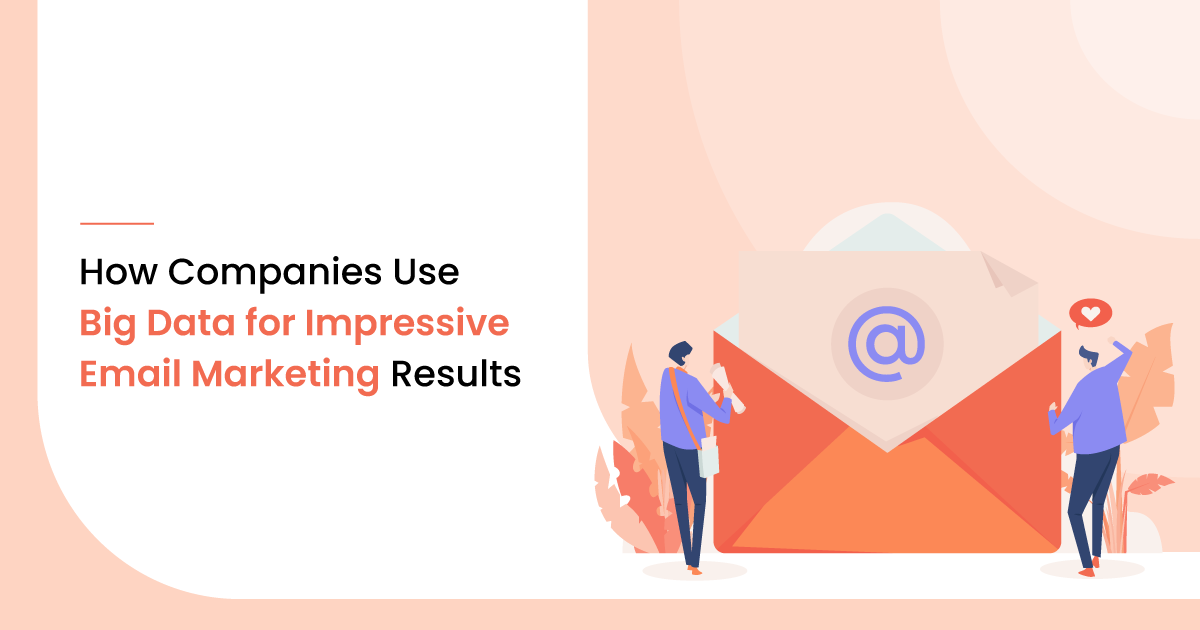The discreet email is one of the most potent arrows in the quiver of a marketing and sales team. When social media software is fast losing its credibility, and influencer marketing not applicable in many scenarios, especially the B2B segment, companies pay more attention to email marketing.
The current market scenario, according to Smart Insights’ March 2021 Survey, overall industry-wise email open rates were close to 17%.
Another survey, by Campaign Monitor, states that industry average click-through rates are at 2.6%, and click-to-open rates are at an impressive 14.1%. The same survey also ascribes that email unsubscribe rate is a mere 0.1%, indicating once people sign-up for a newsletter or promotional content, they tend to get invested.
To understand why some email-campaigns work and many don’t, you must know the right things to do, and gaffes to avoid.
The age-old principles of good communication apply to all email marketing companies as well, albeit with some adaptations. Remember, you are selling your story as the most reliable, convincing, and beneficial for the person who would read email!
1. Subject sets the tone
Daily we trash too many unopened emails or report them as spam. We made a judgement call without even opening them! Can you guess why?
The subject line.
It is the first thing that any email reader will see – most likely on their mobile devices – and therefore must be crisp, catchy, and clear. Subject lines can be bland, lousy, tasteless, or even disgusting if not properly drafted. Unsure or sleazy subject lines can be off putting or can send the wrong signal about your intentions!
It is like writing a good copy – packed with punch. Forcing the user to click on the email and read whatever you wish to discuss or offer. It must be compelling, without being too assertive.
Personalizing subject lines – like “Hey Michael, grab great dining offers”, instead of “Super discounts at your favorite restaurants” – can make them appealing. Customers support like that you offered them something exclusive!
If you were already in touch, then mentioning their goals, targets, or needs works best. And try to keep them as short as possible to allow for small screen devices.
2. The email is about them
Once you have the attention of the reader, you have to engage them fully within 2-4 lines.
Pushing your agenda, before identifying with the reader, puts them off and they will delete the mail. You can’t get to know someone, and get their interest in you, if you keep talking about yourself!
Start with how you know what they want, and how your company can offer it! And once you’ve established that you understand them, then you can go on to talk about your company and services, but briefly.
No one has time to read a novel or saga in an mailer! Keep it to the point, and simple – ensure continued customer engagement rather than fatigue.
3. Respect their time
If your email goes on about extolling your virtues, ratings, rankings, etc. then you are not doing any favors to them or to yourself.
The focus should always be your client’s needs, goals, and requirements and how you can help them achieve them. By keeping the conversation clear, short, and direct you shed the flab in your dynamic messaging, making it attractive.
Before you send, re-read, rephrase, and restructure your email so that it can be read in under 2 minutes. If you wish to say more, then provide the links to blogs, and articles on your website within the email where the more interested reader can go and educate themselves.
No one likes to read emails from and do business with a person who “did not sound trustworthy!” So how do you evoke trust and confidence? The tone of your email must show you in control of the affairs at your end. You must sound refined, reliable, and professional in order to win their trust.
Most people are wired to better understand authoritative figures and speech and assume they are telling the truth. So, use of professional tone and tenor can lend you an air of authority, without being assertive or rude.
5. Check, Check and Re-check!
If you compose an email with typos & bad grammar, use too much slang or abbreviations, and have incorrect spellings& broken links, then your reader will have only one impression– you neither value your time nor theirs!
Make use of spell-checkers, test each link multiple times, and take helps of a professional language app, plugin or professional to make emails syntactically and semantically correct. Show your readers that you mean business, and you value their time and attention to allow even a comma to be misplaced!
6. Keep the mailing list updated
Too many email campaigns fire emails to IDs that were invalid, have errors, or have reported you as spam! This is a wastage of your resources and suck your attention by keeping the denominator artificially high than it really is.
Update your email list at least once a month by removing all the addresses that were bounced, mark the IDs as important that were referred to by existing customers, and categorize & classify each ID according to multiple filters.
This can easily be done by tracking the digital activity of your contacts. Your email list should grow, but not with senseless and rotten data, but with contacts that actually will read emails from you. Use smart SEO system, Re-marketing, and PPC strategies to grow the list and convert them into leads.
7. CTA
If you are able to hold the attention of the reader for close to 2 minutes, then now it is the time for Call to Action. Most likely the purpose of an email is to evoke a response from the user – and you can’t expect each user to write back to you their exact needs.
A good CTA – button, link, and form – will allow the users to fill in as little data as needed and be assured that her requirements will be met. Keep the instructions around the CTA simple, to convey what you want them to do next or what you want from them.
Also make your phone numbers, email, and location clickable – user may click and open them in respective apps on their phone. In email marketing, simple begets action!
8. Scheduling may (not) matter!
The time-of-day of the email may matter depending on the nature of your work. There are no set formulae or heuristics to tell you what is the best time to schedule your emails. You can test by sending emails to different users at different times and comparing their engagement metrics over a period of time.
But all this will be a mere technicality, if all the above factors are not taken care of. You’ll beat around the bush and miss a real chance to engage your customers, lead generation and prospects.
9. Pay attention
Finally, each campaign you run may backfire, if you do not pay attention to the factors that worked or didn’t in the previous campaigns. You must also pay attention to the latest guidelines related to spamming by major service providers and use tools to track and analyse the outcome of campaigns.
A little common sense would tell you what works, and in what combination, and what does not. A good CRM tool will help you gain valuable insights, track each email-opens, schedule system, manage mailing lists, design email templates, and play around with many more tools.
Need Any Technology Assistance? Call Pursho @ 0731-6725516




